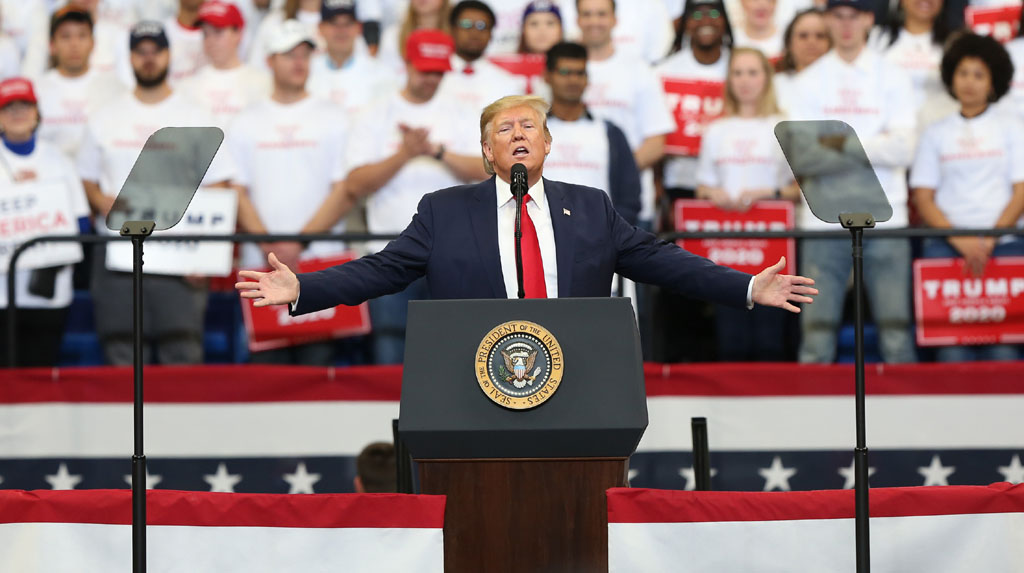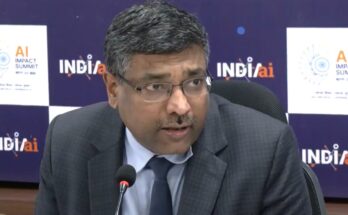New York: Defying the coronavirus pandemic, US President Donald Trump has re-launched his re-election campaign with sharp attacks on the left and the radicals tying them to the Democratic Party.
The Saturday rally in Tulsa in Oklahoma, a state dominated by his Republican party, was his first public meeting since March 2 when the COVID-19 pandemic interrupted his campaign.
In his speech of about of 100 minutes, Trump called his Democratic Party rival, former Vice President Joe Biden, a “helpless puppet of the left” but underlining his attacks on him as a person of diminished capacities manipulated by others said that he was himself far from being a radical but was used by the left.
“I don’t think he knows what he is any more. But he’s controlled by the radical left,” he said.
To appeal to voters in the middle, he targeted the continuing protests around the country sparked by the extra-judicial killing of an African-American man by police in Minneapolis that have led to calls for abolishing the police and for rewriting the nation’s history and removing statues and memorials to the nation’s founding fathers and national heroes who owned slaves.
The unhinged left-wing mob is trying to vandalise our history, desecrating our monuments, our beautiful monuments, tear down our statues.”
He accused the Democrats of trying to “demolish our heritage so they can impose their new oppressive regime in its place”.
Trump did not mention George Floyd, whose killing in Minneapolis is behind the national protests, or talk about police brutality against minorities.
He did make two racially insensitive remarks: He used the Spanish word for man, asking who would people turn to when a “hombre” tries to break into their house and referred to COVID-19 as the “Kung-Flu”, which would be seen as mocking the Chinese American minority.
Trump boasted about the economic progress made till the COVID-19 pandemic hit the world and spoke of the stock markets’ rebound since then, although the unemployment is high.
Americans would lose their stock market-linked retirement savings and future economic progress if the Democrats came to power with a radical agenda, he said.
He defended his handling of the coronavirus pandemic and played down the importance of testing saying the 25 million tests conducted were 20 million more than was needed.
The more testing there was, the more the COVID-19 cases, he said, adding: “So I said to my people, ‘slow the testing down’.”
Trailing Biden in polls by 8.8 per cent, according to the RealClear Politics average of polls, just 135 days before the November 3 election day, Trump risked the COVID-19 threat to hold his rally to try to energise his base.
Democrat member of the House of Representatives, Raja Krishnmoorthi accused Trump of “going against the advice of medical professionals and putting thousands of lives at risk — all to spread lies and rile up his far-right base”.
Trump defended the rally by pointing to the Democratic Party-backed anti-police protests of thousands around the country with no social distancing or compulsion to use masks.
Those entering the Tulsa stadium, however, had to undergo temperature checks and were provided with masks and hand sanitisers, which they were not required to use.
Six people who had worked on the rally organisation had tested positive for COVID-19.
Some stretches of the 19,000-capacity stadium were empty and a second outdoor speech near the venue was cancelled because there were not enough people for it.
Campaign spokesperson Tim Murtaugh, who had said that there had been 1 million requests for tickets to attend the main rally, blamed the anti-Trump protests near the stadium for the low turnout.
The protests went off peacefully and only verbal skirmishes between the Trump supporters and opponents and tearing up of signs were reported.
Democratic Party supporters tried to stop the rally with a legal challenge asserting that it was a public health threat, but the state supreme court rejected it.
Trump tried to capitalise on the looting and the violence that dominated the early days of the nation-wide anti-police brutality protests.
He attempted to define the Democratic Party by the violent radical left, which has put the party leaders in a bind, unsure how far to go to condemn them or disown them in a party where the left is most voluble now.
Whenever Trump called for action against the rioters and looters, the Democrats and the media sympathetic to them have themselves muddled the definition by claiming that he was against “peaceful protests”.
When Trump blamed two mostly White elements, anarchists and the Antifa, a loosely organised group claiming to be anti-fascist, for the riots some Democrat senators objected to it.
Calls to abolish the police and to end budgets for the police are prominent in both the oratory and sloganeering at the protests and some local governments that control most of the police in the US have begun to act on them.
The Democrat-controlled Minneapolis city council has already voted to abolish its police department and proposals have been floated elsewhere.
The dangers of the spiralling anti-police movement were seen in Seattle where the left dominates to the extent that the city council has passed a resolution condemning India’s Citizenship Amendment Act.
To avoid confrontations that could lead to criticism of law enforcement, police have abandoned an area of the city taken over by protesters who have declared the area “no cop” Capitol Hill Autonomous Zone.
Early Saturday morning one person was killed and another injured in shootings within the area.
The protesters controlling the zone would not let in police and the fire department would not send in ambulances into the area to transport the victims.




